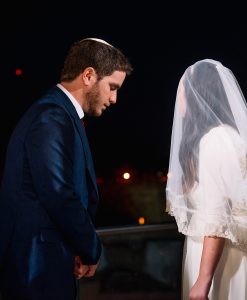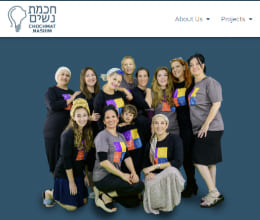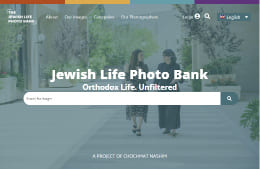Originally published in In Jerusalem, March 10, 2017
Noam and Noa wanted to marry according to Jewish law and tradition, but wanted nothing to do with the Chief Rabbinate. Both felt that, with its stranglehold on marriage and more importantly, divorce, where the rabbinate must approve a couple’s desire to divorce before it can be implemented, the institution does more harm than good.
They searched high and low for a way that would enable them to marry according to Halacha, without having to encounter the rabbinate at all.
Why would a young couple on the verge of starting a new life together be thinking of the end of their marriage?
Jewish law mandates that when a couple seeks divorce, it is the husband who must give the bill of divorce (get) to his wife, and she must accept it. Aguna is the term used to describe a woman trapped in marriage, while she awaits the delivery of a get from her husband. According to traditional Jewish sources, the classic case of an aguna was a woman whose husband
could not be found. One whose husband was lost at sea, did not return from a journey, or was missing in action; those are the traditional agunot.

When a husband is available but simply refuses to provide his wife with a get, the technical term for her is not aguna, but mesurevet get. That said, “agunot” is used colloquially for any woman waiting to be freed from her marriage. There are many women who are currently being denied a divorce; unofficial estimates are in the thousands. The plight of agunot is a national one and for those aware of the issues at hand, a worrying one. Any woman who gets married according to Halacha is in danger of becoming an aguna, whether her husband disappears, becomes incapacitated and incapable of giving a get or simply refuses.
While Noam and Noa, were clearly aware of the potential for a woman to be chained to her marriage, many young brides are not. The Fast of Esther has been designated as International Aguna Day, to increase public awareness of the plight of women who have been harmed by this pitfall of Jewish law and to advocate for solutions (with the International Coalition for Aguna Rights proposing legislation that it be marked in the Knesset).
Appropriate, given that Esther herself was trapped in a marriage she presumably did not want, by an establishment she
could not fight. While a woman who awaits her get is the primary victim of the man’s inaction, the rabbinate’s system of
Jewish marriage and divorce has many victims beyond the chained woman herself. In fact, it sometimes seems that our entire religion is chained, as it were, by the lack of urgency to solve this halachic conundrum.
The religious leadership appears to be falling short. Indeed, for many, the inability – or refusal – of the establishment to put an end to a husband’s capacity to keep his wife married to him, even against her will, is enough to make them want out.
So what is a God-fearing, Halacha-abiding, social-justice- seeking, loving young couple to do?
Noam and Noa found their answer in Rabbi Michael Avraham and his suggestion to work together with Batya Kahana Dror, the director of Mavoi Satum, an organization that provides legal representation for agunot and mesuravot get, who has spearheaded an innovative way to marry halachically outside of the rabbinate.
For years, Kahana Dror, lawyer and religious court advocate, has beseeched both individual rabbis and the rabbinate itself to work to create systemic solutions to the issue of aginut (the state of being an aguna) – to no avail.
“The current situation is untenable,” she says. There are thousands of Jewish women, who, because they respect their tradition, or because the state forces them to live by it, are trapped by it. We’ve gotten to a point where women have to make the choice to either leave their religion or relinquish their human rights.”
Now, Mavoi Satum is at the forefront of a solution: halachic marriage outside the rabbinate, with an agreement that protects the couple against both aginut and get-refusal. The program is called B’Tabaat Zu (With This Ring).
How it works
Mavoi Satum partnered with the beit din of Rabbi Avraham Dov Levine , a judge who has held several positions in the Jerusalem rabbinate and is a recipient of the Rabbi Kook Prize for Rabbinic Literature. The result is a marriage ceremony that upholds Halacha and protects the couple. Noam and Noa had all the trappings of a traditional Orthodox wedding: huppa, ketuba and kosher witnesses, with added protection for both parties. The couple signed a halachic prenup that protects against get
refusal by levying a daily fee on whichever party denies the other a divorce, and they agreed to ‘conditional’ kiddushin – kiddushin al tnai.
According to Dr. Rachel Levmore, an author of one of the most well-respected and effective halachic prenups, the Heskem l’Kavod Hadadi (Agreement for Mutual Respect), has successfully prevented several cases of get refusal, even when the husband had indicated that he was not willing to give the get. Moreover, when a couple comes before the court’s judges
and are asked, “Are you willing to give a get?” when the husband replies, “Yes, I signed the heskem [agreement],” the judges move promptly to dispatch with the divorce.
What is kiddushin al tnai?
Kiddushin al tnai amounts to a failsafe contingency plan. Essentially, it says that the marriage is valid until and unless certain conditions occur. Should these circumstances come to pass, the marriage is rendered null and void and both parties revert to the status of being single. This condition is key, in case the couple find themselves in a situation of non-consensual divorce or incurable illness.

In the past, due to societal need, whether times of war or instability, rabbis made takanot (decrees) for the community, including this conditional marriage. The conditions? For example, if a man did not return to his home after a journey,
or if he disappeared in war. These marriage contracts are mentioned throughout Jewish sources from the time of the Mishna.
In fact, Israel’s first Sephardi chief rabbi, Ben-Zion Meir Hai Uziel, sought to have kiddushin al tnai established within the rabbinate and Jewish marriage back in 1935, but his efforts were rejected. Kahana Dror likes the remedy of kiddushin al tnai, as it retains the traditional kiddushin of Judaism and protects the woman’s standing, since it eliminates the need for a get and its mandated delivery by the husband.
Thus, if a man becomes incapacitated (like the man in Safed who lay in a coma for years, his wife unable to move on), and cannot
grant his wife a get, she is automatically freed based on the document they both signed. It also removes the potential for manipulation of the soon-to-be-former partner by means of the get. A man who knows that his marriage will be automatically annulled if he runs off or if they are separated for a year, has no advantage to withhold a get for money.
“We used kiddushin al tnai even though it is not accepted by everyone, because enabled us to get married according to Halacha
and protect each other in any situation. The more people who use it, the more accepted it will become,” Noam said.
What is the status of these couples?
The couples who get married via B’Tabaat Zu announce their marriage via Mavoi Satum’s website and declare themselves married. This makes them ‘yeduim batzibur’ as far as the Interior Ministry is concerned, similar to common-law marriage.
“By announcing that they are married, we ensure that it is known that they are married and are not looking to hide their
marriage,” says Kahana Dror. To the contrary, “these couples can share their lives, children, expenses, legal and medical decisions. They are only hampered in the event that they want to adopt children, something they cannot do legally.”
What is the hope for this program?
After Noam and Noa were married, Mavoi Satum went with them to register their marriage at the Jerusalem religious council.
They were turned away as not recognized, as are all marriages that are not conducted via the rabbinate, and sent to open a file at the Beit Din. (In fact, it is currently illegal in Israel to have a Jewish marriage ceremony outside the rabbinate – both the couple and the officiating rabbi can be sentenced to up to two years in jail.)
They opened a file with the rabbinate and had witnesses attest to their wedding. They are waiting to hear whether rabbinate will recognize the marriage. Being allowed to register as married would mean that the rabbinate accepts the marriage as valid – an important step in the battle toward better Jewish marriage where the woman, justice and the entire religion will no longer be able to be held hostage.


